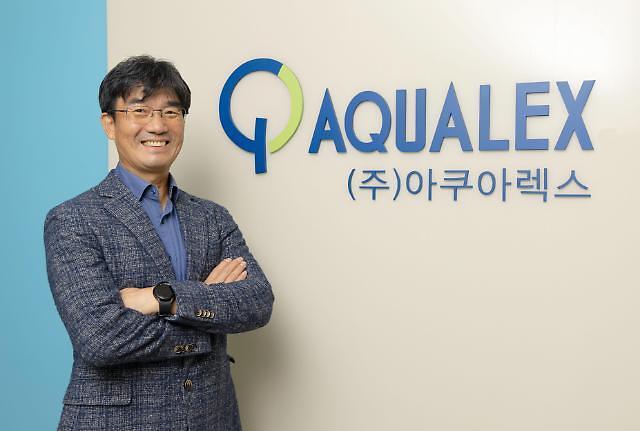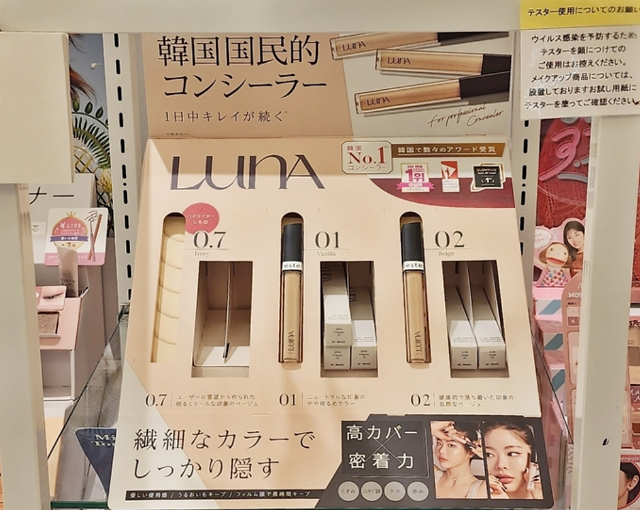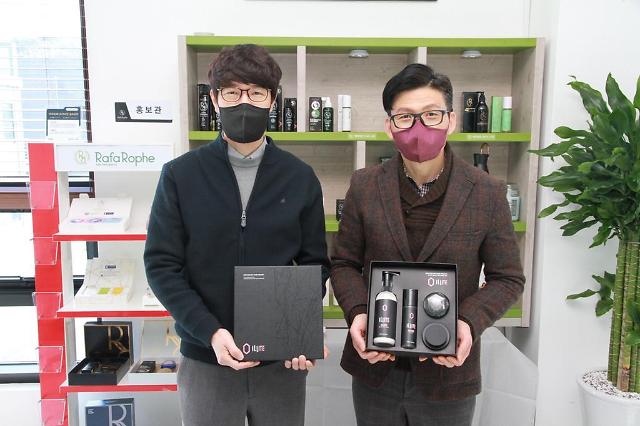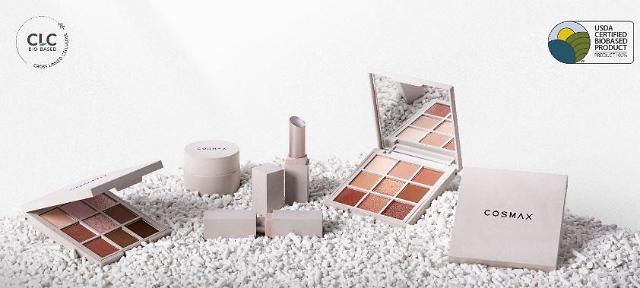
[Courtesy of Aqualex]
"There is a growing demand for Korean cosmetics in Southeast Asia as well as in the U.S.," Aqualex CEO Jang Ki-ho said in an interview with Aju Business Daily. "This year, we will expand the proportion of overseas sales by stably exporting existing products targeting U.S., Vietnam, and Indonesia markets," he said, vowing to achieve a more than 50 percent increase in sales in 2023 by introducing functional and effective products using natural ingredients.
The dermacosmetic market is bound to grow further due to the expanding scope of functional cosmetics and unexpected diseases, Jang said, presenting a roadmap to transform his company into a customized service platform by identifying various customer needs and tastes based on near-field communication (NFC), which is a form of contactless communication between devices like smartphones or tablets.
"The era of hyper-personalization is coming, and cosmetics will eventually have to evolve in line with the personalized era," Jang said. Hyper-personalization can be done by creating custom and targeted experiences through the use of data, analytics, artificial intelligence, and automation to increase the satisfaction of customers and win their brand loyalty.
When Jang founded Aqualex in 2001 while working as a researcher at South Korea's top beauty product maker Amore Pacific, Aqualex just had a small laboratory. "By conducting experiments related to the use of natural raw materials, I have polished cosmetics development and manufacturing technologies that minimize skin and human body damage," he said.
Now, Aqualex has independent manufacturing lines for both original equipment manufacturing (OEM) and original development manufacturing (ODM). An OEM company creates products of other companies for reselling. An ODM company designs and manufactures a product, as specified, that is eventually rebranded by another firm for sale.
"Only with OEM, Aquarex used to become unstable depending on the situation of partner companies, so I had ambitions to expand our business to ODM and nurture my own brand for stable management," Jang said. However, it has never been easy to survive as a small and medium-sized company in the competitive cosmetics market.
Being plagued with financial difficulties and manpower shortages, Aqualex experienced a life-or-death crisis in 2017 when a diplomatic row over a U.S. missile shield triggered China's informal trade and economic retaliation and blocked the export route of OEM products. Since US troops were allowed to bring in a Terminal High Altitude Area Defense (THAAD) system in 2016, Chinese consumers have shunned South Korean products, dealing a blow, especially to South Korea's small and medium-sized enterprises doing business in Asia's biggest market.
"I was able to overcome the technical aspects of cosmetics manufacturing, but it was really difficult to overcome when there were no sales due to the lack of orders," Jang said, adding that the THAAD crisis sent his company exploring new overseas markets to survive. Jang's desperate efforts to turn crisis into opportunity paid off. With stable profits and brand recognition in Russia, the U.S., and Vietnam, Aqualex has expanded its ODM business.
To cope with rapid digital transformation, Aqualex has adopted a smart factory. "We can see the entire process from ordering to shipping at a glance through a monitor, allowing us to produce optimal products with minimum cost and time." The first fruit was Atozal, a skin barrier improvement product developed with Eulji University researchers.
Jang said that Atozal showed excellent effects in recovering skin barriers and improving itching by adding patented cerazulin ingredients, including azulene which is a precious raw material that can only be collected from chamomile flowers. Azulene has a long history, dating back to the 15th century as the azure-blue chromophore obtained by the steam distillation of German chamomile, a daisy-like plant. Chamomile may be used as a flavoring agent in foods and beverages, mouthwash, soaps, or cosmetics.
With confidence in the quality of Aqulex products, Jang suggested that South Korea should apply stricter standards to help expedite the market for proper functional cosmetics with the right amount of ingredients. "Unlike Japan and the United States, the non-drug market is not active in South Korea, so functional cosmetics are on the rise," he said, urging the government to support high clinical costs for the development of functional cosmetics.
Aqualex has conducted research on products using nanoemulsion technology as well as various natural extracts including bioingredients and liposomes. A liposome is a spherical vesicle, a cell structure in which liquid or cytoplasm is enclosed by a lipid layer. The liposome is a multi-role player that can work as a drug delivery vehicle for nutrients and pharmaceutical drugs.
(This story is based on a Korean-language interview by Aju Business Daily reporter Lee Na-kyung)
Copyright ⓒ Aju Press All rights reserved.




View more comments